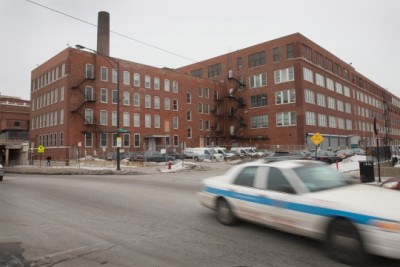Chicago Police ‘Disappeared’ Over 7,000 People to Notorious Homan Square
Nearly 6,000 of those secretly imprisoned and interrogated at secret interrogation facility were black

Police in Chicago kidnapped and imprisoned more than 7,000 people between 2004 and 2015 at the secret interrogation warehouse now known publicly as Homan Square, according to new reporting by the Guardian.
Nearly 6,000 of the disappeared were black, which is proportionately more than double the city’s black population and 82.2 percent of the 7,185 total individuals sent to the facility. An additional 11.8 percent were Hispanic and 5.5 percent were white.
Only 68 people—less than one percent—held at the ‘domestic black site’ were allowed access to lawyers or to tell others where they were. As Common Dreams previously reported, the imprisonments and interrogations at Homan Square happened off the books, without detainees’ names being entered into official law enforcement databases, which would have made them easier to find.
“The reality is, no one knows where that person is at Homan Square,” University of Chicago Law School professor Craig Futterman said. “They’re disappeared at that point.”
The latest disclosures in the Guardian‘s series on the site, the result of an ongoing transparency lawsuit and investigation, reveal that police officers kept detainees at Homan Square for hours and even days and pressured them to become informants as part of the department’s anti-gang operations.
Spencer Ackerman reports:
The police portrayals contrast sharply with those of Homan Square detainees and their lawyers, who insist that “if this could happen to someone, it could happen to anyone”. A 30-year-old man named Jose, for example, was one of the few detainees with an attorney present when he surrendered to police. He said officers at the warehouse questioned him even after his lawyer specifically told them he would not speak.
“The Fillmore and Homan boys,” Jose said, referring to police and the facility’s cross streets, “don’t play by the rules.”
“Not much shakes me in this business—baby murder, sex assault, I’ve done it all,” one attorney, David Gaeger, told the Guardian. “That place was and is scary. It’s a scary place. There’s nothing about it that resembles a police station. It comes from a Bond movie or something.” Gaeger’s client was sent to Homan Square in 2011 for a marijuana arrest.
In fact, the majority of those sent to the facility were arrested for drug charges, rather than violent crime.
Many others were never even charged.
Meanwhile, police accounts have varied widely from those of the disappeared. In many cases, officers stated that detainees were given access to attorneys when they were not, or the visits proved too short to be useful. One woman, identified as Chevoughn, said she was kept for eight to ten hours at Homan Square over theft allegations, where she was questioned in a “cage” and denied access to a lawyer until she went to central booking after her kidnapping.
Cook County commissioner Richard Boykin and U.S. Representative Danny Davis in Marchdemanded that the Department of Justice investigate the activities that took place at Homan Square.

